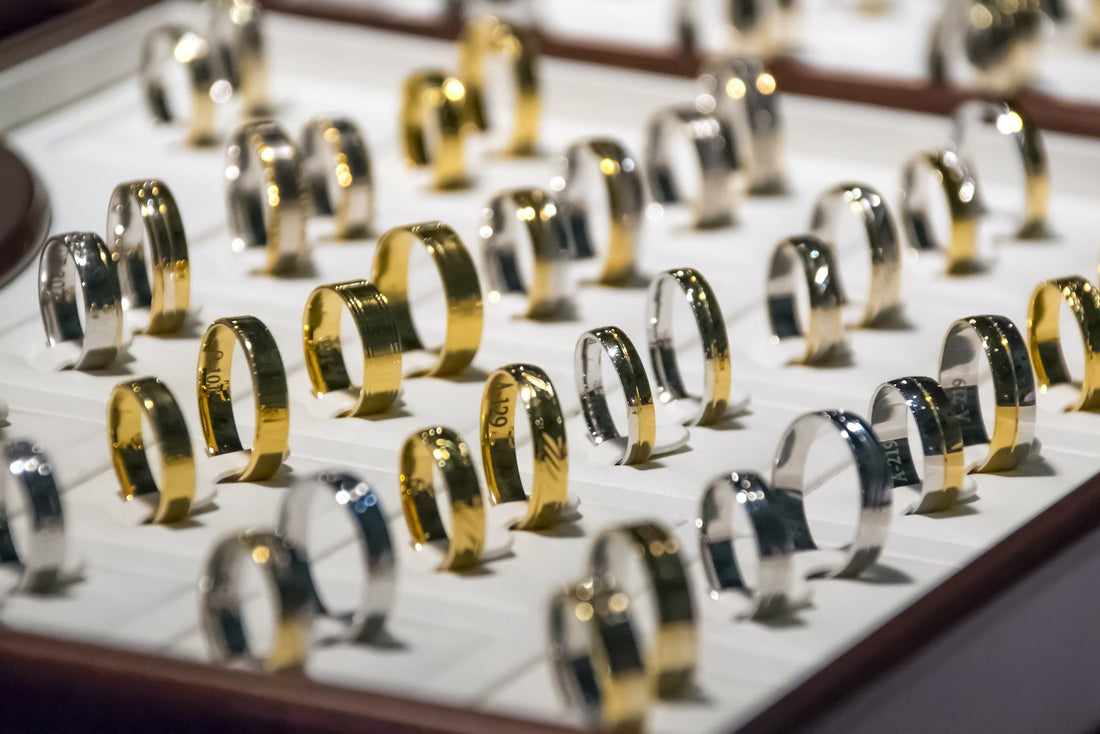Diving into the world of gold jewelry, one cannot fail to notice the enchanting allure that greets the eyes: white gold and yellow gold. These two captivating types of gold, each boasting their unique charm and beauty, have over time become staples in the world of precious jewelry.
But what exactly sets them apart? How is each one made, and what distinct characteristics does each possess?
Why does one seem to be priced more than the other? And most importantly, is white gold more expensive than yellow gold?
Navigating through these options could leave you with more questions than answers, especially without the right insights. Today, we delve deeper into the intriguing world of mighty gold jewelry to unravel the mystery, casting a focused beam on white and yellow gold.
We will shed light on their differences, advantages, disadvantages, and cost implications, ultimately illuminating your path to making an informed choice. Dive with us into this exploration of elegance and opulence. Expect to come out glistening with golden appreciation and knowledge.
White Gold vs Yellow Gold
Gold, enchanting and timeless, has been a symbol of opulence and luxury since time immemorial. Notably, white and yellow gold are among the most desired types of gold jewelry due to their uniqueness. This article brings a detailed explanation of white gold and yellow gold, their make, appearance, advantages, disadvantages, cost features, and how to choose between the two based on various factors including durability, upkeep, price, and personal preference.
Why is this important? Understanding the distinctions, benefits, costs, and drawbacks between white gold and yellow gold will empower you to make an informed decision when purchasing this precious metal – whether for personal use or for a loved one.

Differences Between White Gold and Yellow Gold
Yellow gold is obtained from pure gold, alloyed with silver and copper to give it strength and its characteristic yellow hue. White gold, on the other hand, is created by alloying pure gold with other white-colored metals such as palladium, manganese, or nickel, and is often plated with Rhodium for a brighter, tarnish-resistant finish.
Visibly, the hues differ – yellow gold naturally exhibits a warm yellow hue and is traditionally more recognizable, while white gold is more modern and stylish, with a luxurious silvery-white appearance. In terms of composition, the quantities and types of metal alloys utilized differ significantly, leading to diverse physical properties and benefits.
The Advantages and Disadvantages of White Gold
White gold stands out due to its elegance and contemporary style. It offers a combination of luxury and durability, making it ideal for everyday wear. Moreover, its rhodium plating provides reinforcement against scratches and tarnish, conserving its luminous appeal.
However, white gold demands more caretaking; the rhodium plating can scratch off eventually, requiring re-application. Some people may also be allergic to the nickel used in crafting white gold, resulting in skin irritations.
The Advantages and Disadvantages of Yellow Gold
Yellow gold is known for its vintage and timeless appeal. This type of gold is more malleable and less complex to work with from a jewelry maker’s perspective. If well taken care of, it will maintain its lustrous appeal and value for generations.
However, its susceptibility to scratches and dents due to its softness can be a key downside for yellow gold. Additionally, consistent usage can lead to discoloration, and occasional expert cleaning is crucial to maintaining its brilliance.
The Cost Factor: Is White Gold More Expensive Than Yellow Gold?
The cost difference can significantly depend on various aspects like karat weight, designer or brand, market demand, craftsmanship, and presentation, among others. However, they are almost alike in price in their purest forms. Occasionally, white gold may slightly cost more due to its rhodium plating that boosts its longevity and appeal.
Which is Better: White Gold or Yellow Gold?
Choosing between white and yellow gold heavily relies on an individual’s taste, lifestyle, and budget. If you love modern, classic fashion with a minimalist flair and you’re highly active, white gold could be your best fit. But, if timeless, vintage sophistication warms your heart, and you’re ready to put in the necessary upkeep, then yellow gold is your precious stone.
Conclusion
Our analysis brings into focus the key differences between white gold and yellow gold. Each variety carries unique attributes – charm, composition change, and drawbacks. The cost appears almost indistinguishable; however, your personal taste, lifestyle, and maintenance preference play pivotal roles in choosing the fitting type of gold for you. The blend of information facilitated in this article will help you make an enlightened decision about your next gold investment.



